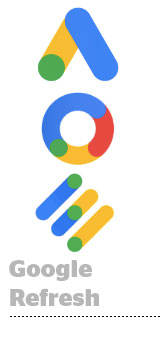
Google is kicking many of its product names and acronyms to the curb – including the 22-year-old DoubleClick brand.
Google is rebranding its products into three groups: Google Marketing Platform for enterprises, Google Ads for small and medium-sized businesses and Google Ad Manager for large publishers. The transition will begin in mid-July.
This transition will phase out familiar acronyms: DoubleClick Bid Manager (known as DBM), DoubleClick Campaign Manager (DCM), DoubleClick for Publishers (DFP), AdWords and Google Ad Exchange (AdX).
“[The changes] reflect the current reality of where these products are and where they need to go,” said Sridhar Ramaswamy, Google’s SVP for ads, at a press conference.
While most of the changes are in name only, Google plans to make it easier to use all its products together by centralizing its buyer and seller technologies under a single name.
Google said that when marketers use more of its products together, they achieve a higher ROI.
For example, Google Marketing Platform will connect Google Analytics 360 to its demand-side platform, campaign, creative and audience management tools. (Those ad-buying tools will collectively be referred to as Display & Video 360.)
A double-digit percentage of customers already connect Google’s buying and measurement tools, according to Dan Taylor, managing director of platforms for Google.
Sprint, for example, reduced customer churn 10% when it combined ads and analytics, as the telco got a full view of customer journey, which improved how it executed ad campaigns.
The ability to map the customer journey pushes Google Marketing Platform beyond paid media.
Google Marketing platform is “a set of tools that are meant to work together across paid and owned media,” Taylor said.
Google insists marketers will still be able to use non-Google products within the marketing platform.
“The interoperability, whether it’s with other exchanges or other measurement providers, that will not change,” Ramaswamy said. “You can take what you want.”
Better connections
The changes aren’t all on the surface – Google has added some around connectivity.
Google simplified the ability to connect different products via an Integration Center section in the Google Marketing Platform. Now marketers can easily combine buying tools like Display and Video 360 with Google Analytics 360 and the analytics warehouse BigQuery. The Integration Center goes beyond Google products: Salesforce Sales Cloud and Google Analytics 360 can be connected there, for example.
For SMBs, Google Ads has a new feature, Smart Campaigns, which uses machine learning to optimize campaigns based on different KPIs, like store visits, website conversions or phone calls. The setup resembles Universal App Campaigns, which helps app developers looking to drive app installs.
Publisher progress
Changes to the publisher product, Google Ad Manager, mostly reflect changes that have already been made to unify the ad server formerly known as DFP and the exchange formerly known as AdX, said Jonathan Bellack, director of product management for Google (and a DoubleClick veteran).
Google is essentially picking DFP to be the user interface for publishers and moving all Google Ad Exchange functionality to within its ad server.
Bellack added that a single platform with one name better reflects how publishers are doing business.
The distinction between an ad server and ad exchange no longer matters in a world where everything is going programmatic, he said.
“Publishers are bringing programmatic sales teams and programmatic yield teams together,” Bellack said. “We are bringing the technologies together, so one unified sales team can work with one unified ad manager tool.”
Google Ad Manager allows for delivery, measurement and optimization across different inventory types, including display, mobile and connected TV. And it works across deal types, whether it’s a tag-based direct deal or a programmatic guaranteed deal.
Not every Google product will be renamed. AdSense, used by small publishers, and AdMob, used by app developers for promotion and monetization, will remain as is, partly because their customer bases are distinct.
Attribution tool Ads Data Hub will work with Google Marketing Platform but won’t join the family. Marketers with deeper analytics needs can export data outside the platform using BigQuery and the Google Cloud Platform.
But the rest of the changes reflect the drumbeat of digital media – onward toward programmatic.
“All marketing is moving toward programmatic and we will be continuing to invest in that model,” Bellack said.
This post was syndicated from Ad Exchanger.


More Stories
Post Malone and Shane Gillis Come Knocking in Bud Light’s Super Bowl Teaser
Creator Marketing Platform ShopMy Raises $77.5 Million
NBC News Cuts 40 Employees as Part of Strategy Realignment